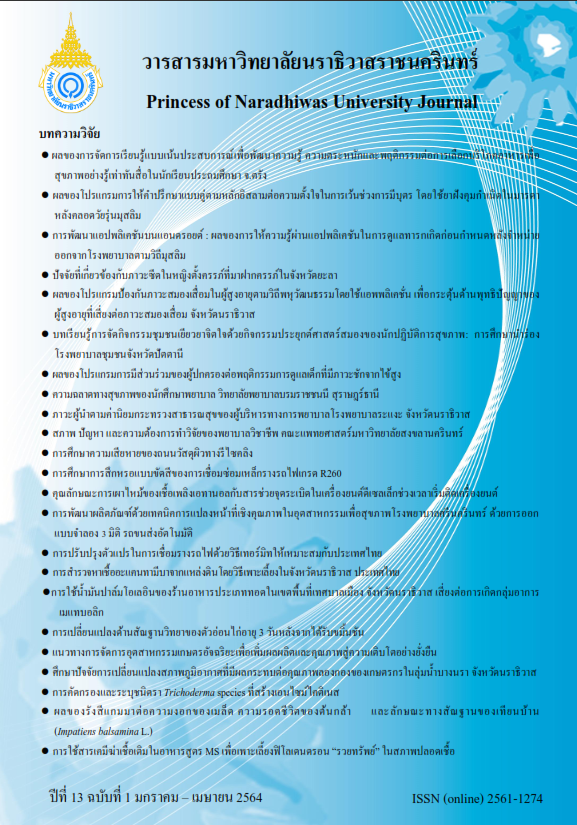Improving Parameter by Thermite Welding Method to Fit with Conditions in Thailand
Keywords:
Thermite welding, Rail welding, Preheating before welding, Mechanical properties, Metallurgical propertiesAbstract
In this research, work has been applied on-site for recording the welding parameters, especially the process of preheating. The preheating condition was LPG 1.0 bar, oxygen 4.5 bar and took 3 minutes to preheat before welding. Then, the experiment was performed by preheating before welding, it was found that the temperature of rail ends at head and foot positions were at 395 0C and 255 0C respectively, and it called the normal parameter. In addition, the experiments were done with other parameters by selected the most suitable parameter which were LPG 1.2 bar and oxygen 4.5 bar with the preheating time at 6 minutes 30 seconds. The temperatures at head and foot positions were found at 630 0C and 700 0C, respectively. This thus called the improved parameter. Next, the macrostructure, microstructure and mechanical properties obtained from both normal and improved parameters were compared. The width of weld metal and HAZ of the improved parameter was wider. In addition, seeing from macrostructure, pores obtained from the normal parameter were greater, and the microstructure was similar. The hardness test in the HAZ of the improved and normal parameters showed the average hardness 326.94 HV and 299.19 HV, respectively. The slow bend testing was carried out on both specimens. The maximum load and the maximum deflection of the normal parameter were 30 Ton and 3 mm. However, the maximum load and maximum deflection of the improved parameter were 108 Ton and 16 mm. In conclusion, the improved parameter had better quality than the normal parameter.
References
ASTM. (2015). E407: 07-Standard practice for microetching metals and alloys. American Society ForTesting And Materials.
Banlag, S., KobBun, L., Fritz, K, H. (2015). Welding of rail: Technology and Metallurgy. The Journal of Welding Institute of Thailand, 37-45.
British Standard 427. (1990). Method for Vickers Hardness Test and for Verification of Vickers Hardness Testing Machines. British Standard.
EN, B. (2010). 14730-1, Railway applications, Track, Aluminothermic welding of rails, Approval of welding processes. BSI British Standards.
Goldschmidt Thermit Group. (2015). CODE OF PRACTICE FOR THE THERMIT QUICK WELDING PROCEDURES SKV- F Multiple Use Crucible Systems. Germany. Retrieved from www.thermit.com.au › _literature_119553 /Code.
Goldschmidt Thermit Group. (2017). THERMIT HEAD REPAIR, Germany. Retrieved from https://www.gt-railservice.com/fileadmin/user_upload/PDF/Schienenverbindung/THR_DE-EN-FR.pdf
Kittichai, S., Assadakon, L., Sukrit, K., Nutthawat, C. (2017). Microstructure and Hardness Analysis of Railway Steel Subjected to Thermite Welding, Thailand Rail Academic Symposium (TRAS 2017).
Jilabi, A.S.J.A.Z. (2015). Welding of Rail Steels. PhD Thesis, The University of Manchester (United Kingdom).
NIPPON STEEL CORPORATION. (2019). Rail. Japan. Retrieved from www.nipponsteel.com /product/catalog_download/pdf/K003en.pdf.
Thermit Welding. (2015). TheSkV-F Process. Australia. Retrieved from www.thermit.com. au/_literature_121384/SkV
Yamamoto, R., Terashita, Y., Tatsumi, M., Itoh, H., & Umenai, K. (2016). Investigation of Cause and Prevention Measures against Surface Defects on Thermit Welds, Quarterly Report of RTRI, 57(2), 112-117.




